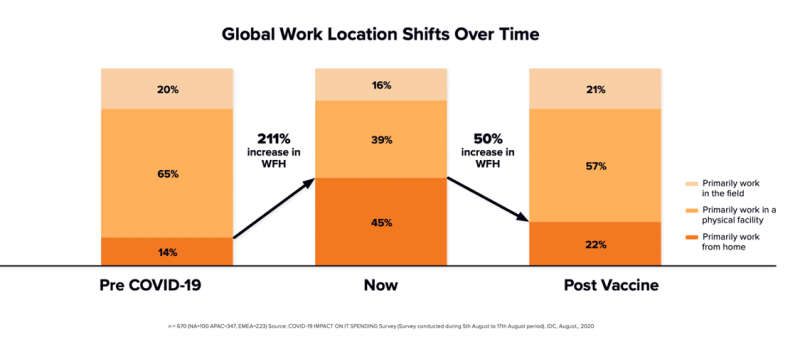Companies
Poly Uncovers Global Hybrid Working Trends in New IDC InfoBrief on Digital Work Transformation

(Contributed)
January 6, 2021 — Santa Cruz, CA
IDC report finds that even after a return to the office option is available, a significant number of companies around the world plan to maintain workforces that are remote or hybrid by design rather than circumstance. This research underlines the essential role that purpose-built hardware will assume in facilitating this shift to the future of work.
Now that we are nearly a year into the pandemic, organizations have had time to chart plans for how to keep their workforces productive and well-equipped for the ‘Next Normal’ that lies ahead. To better understand how this past year has transformed the world of work, Poly invited three IDC Research analysts representing distinct geographies to share their insights and findings on which technologies and workplace trends have redefined ways of working in the COVID-era and beyond.
According to IDC, 47% of organizations that had a long-term digital transformation strategy and made investments before the pandemic are showing strong signs of business growth. Reinforcing the notion that a well-equipped workforce that can quickly respond to change is more likely to thrive during periods of adversity. Furthermore, the important role that collaboration tools and technology will play in the future of work is made evident by the fact that 84% of business leaders plan on accelerating the digitalization of work processes through the use of video conferencing and other tools. This figure is appropriate since 83% of business leaders plan to provide more opportunities to work remotely than before the pandemic – cementing the acknowledgment that with the right tools, work can be done from home just as well or if not better than in the office.
WFH WILL ENDURE: THE GROWTH OF THE HYBRID MODEL
As painful as it may have been for some, the mass remote/hybrid working experiment has shown favorable results for hybrid working. So favorable in fact, that by 2023, 60% of the G2000 have committed to providing technical parity to a workforce that is hybrid by design rather than by circumstance – enabling people to work together, separately, and in real-time.
IDC defines, ‘technology parity’ as “the requirement that all workers have secure access to the resources required to do their jobs, regardless of their preferred device or location.” When setting out to build resilient businesses of the future, workplace transformations must include investments in technology parity to support a global hybrid workforce.
Continue reading here: https://blogs.poly.com/idc-report-digital-work-transformation
###
Tagged Poly








